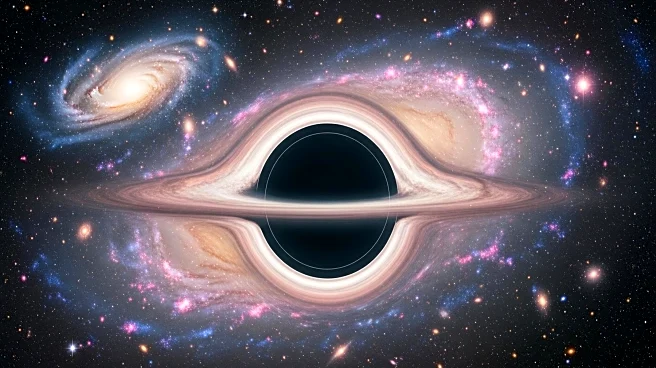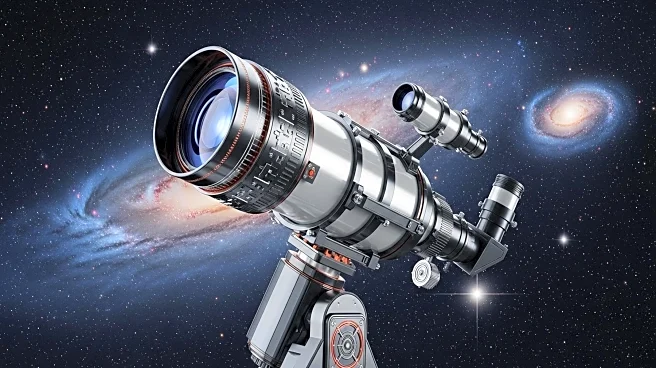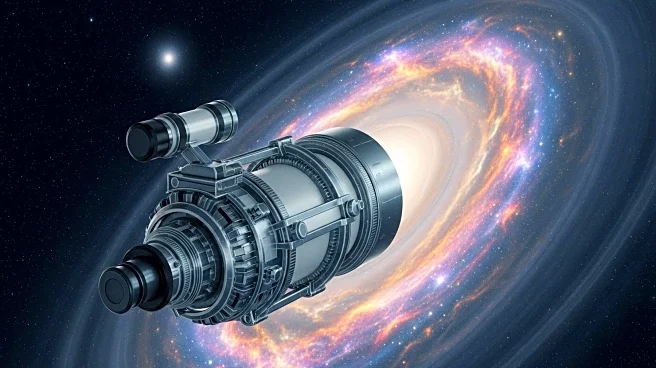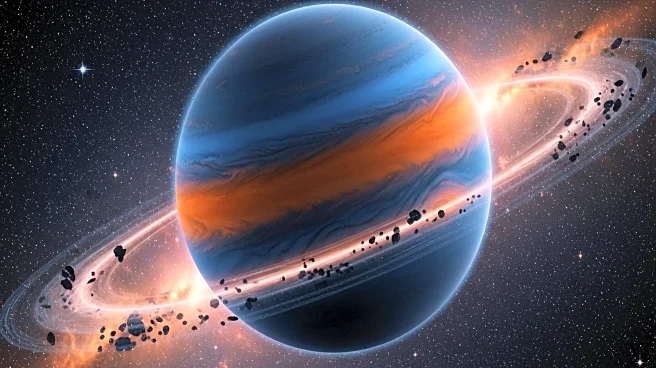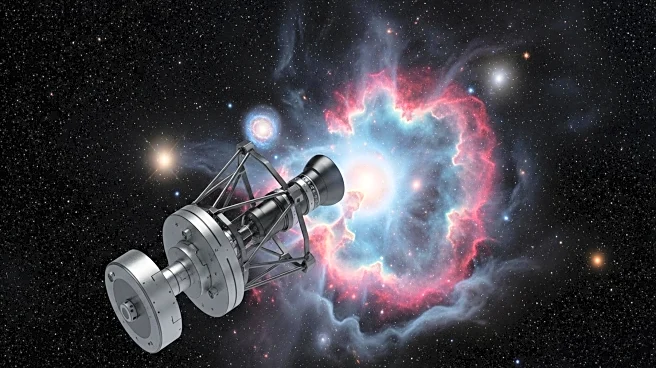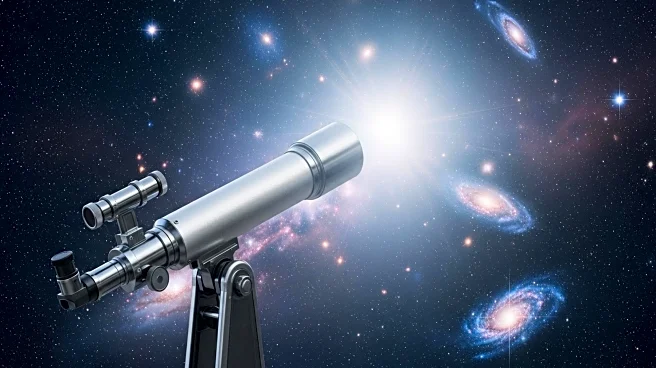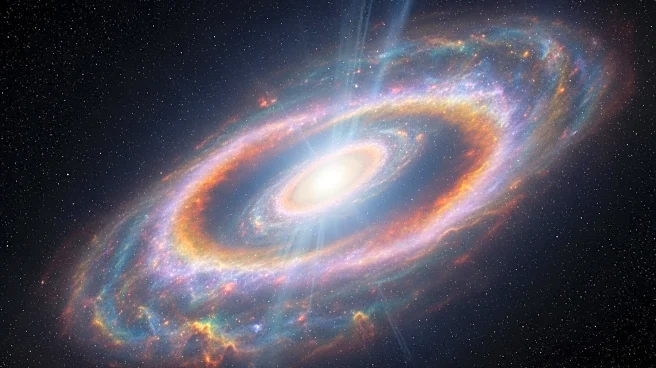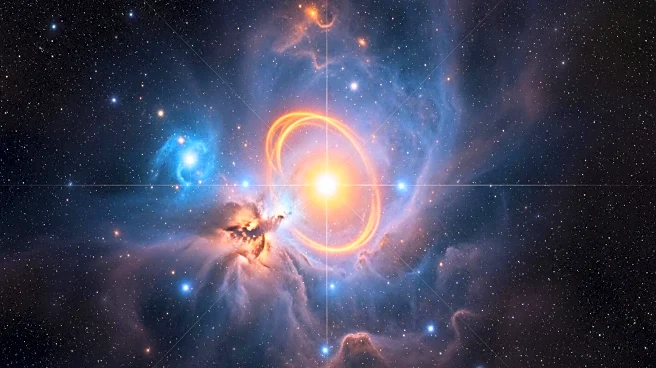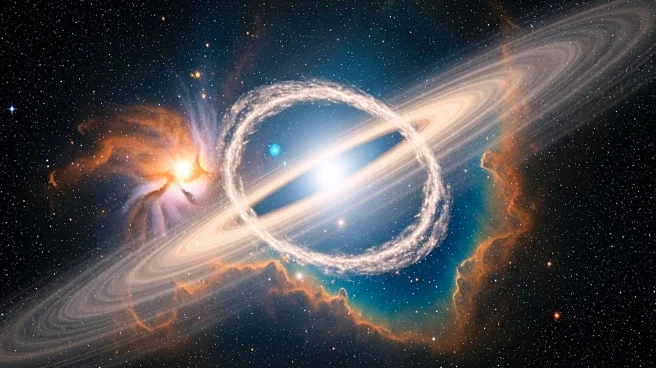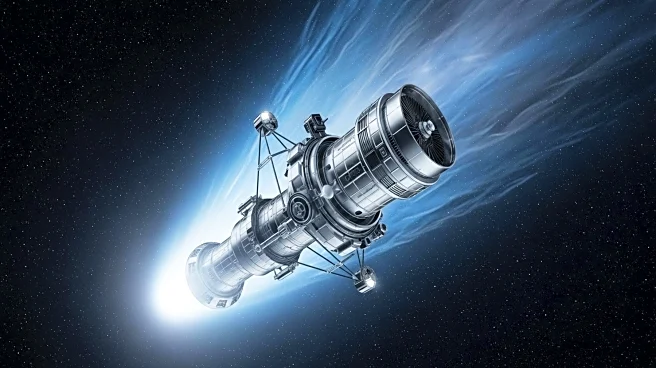What's Happening?
An international team of astronomers, led by The University of Texas at Austin's Cosmic Frontier Center, has identified the most distant black hole ever confirmed, located in the galaxy CAPERS-LRD-z9. This discovery places the black hole 13.3 billion years into the past, just 500 million years after the Big Bang, providing a unique opportunity to study the structure and evolution of the early universe. The research, published in the Astrophysical Journal, utilized data from the James Webb Space Telescope's CAPERS program, which offers far-reaching views into space. The galaxy, part of a new class known as 'Little Red Dots,' is characterized by its compact, red, and unexpectedly bright nature, suggesting the presence of supermassive black holes.
Why It's Important?
The discovery of this distant black hole is significant as it challenges existing models of black hole formation and growth. The massive size of the black hole, estimated to be up to 300 million times the mass of the sun, suggests that early black holes grew much faster than previously thought or started out more massive than current models predict. This finding contributes to the understanding of how supermassive black holes influenced the development of galaxies in the early universe. Additionally, the study of 'Little Red Dots' may reveal new insights into the role of black holes in cosmic evolution, particularly in the first billion years after the Big Bang.
What's Next?
The research team plans to gather more high-resolution observations using the James Webb Space Telescope to further study CAPERS-LRD-z9 and the role of black holes in the development of 'Little Red Dots.' These observations could provide greater insight into early black hole evolution and the characteristics of these unique galaxies. The team aims to test their theories about the rapid growth of early black holes and their impact on galaxy formation, potentially leading to revisions in current astrophysical models.
Beyond the Headlines
The discovery raises questions about the nature of 'Little Red Dots' and their distinct red color, which may be caused by thick clouds of gas surrounding the black holes. Understanding these galaxies could lead to new theories about the conditions of the early universe and the processes that led to the formation of complex cosmic structures. The findings also highlight the capabilities of the James Webb Space Telescope in pushing the boundaries of astronomical research.
